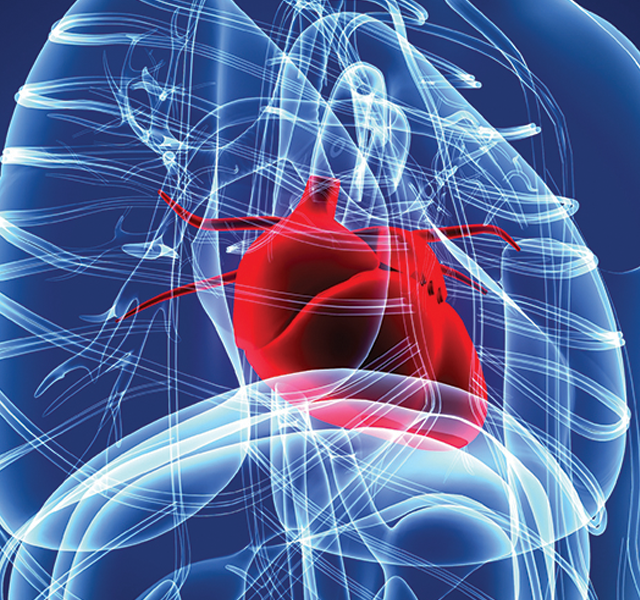The Cardiologist's Wife: Understanding Heart Failure
The Cardiologist's Wife: Understanding Heart Failure
by Lisa Tedder
In recent local news, a man from Parkin received the best Christmas present ever when he became the first patient at St. Bernards to receive an artificial heart pump. The patient suffered from heart failure and had exhausted all other treatment options.
Congestive heart failure is a serious, chronic condition that is one of the most common heart problems for people over the age of 65 in the United States. Many patients are able to lead fairly normal, active lives with proper medical treatment, but if the heart failure is life threatening or other treatments have failed, they might end up needing an artificial heart pump or even a heart transplant.
To better understand heart failure, it is helpful to know how the heart works to supply blood flow to the body. Blood that has just circulated around the entire body enters the heart through the right atrium, which then sends the blood into the right ventricle. The blood flows from the right ventricle to the lungs, where it picks up oxygen to distribute throughout the body. The blood returns to the left atrium and goes from there to the left ventricle. The left ventricle pushes the blood out into the body with its fresh supply of oxygen.
Blood pressure is measured by two numbers. The top number, or systolic blood pressure, measures the pressure in the arteries when your heart squeezes. The second number, or diastolic blood pressure, measures the pressure in the arteries when the heart relaxes.
Heart failure results when the heart isn’t working properly, usually the left ventricle. Diastolic heart failure, also known as heart failure with preserved ejection fraction, occurs when the left ventricle becomes stiff and can’t relax between beats. Systolic heart failure, or heart failure with reduced ejection fraction, happens because the left ventricle has become weak, thickened or even enlarged. Either type means that your heart isn’t working well enough to push blood throughout your body. Blood can back up in the veins, causing swelling or edema in the lower extremities, or fluid can collect in the lungs, causing shortness of breath and coughing (also known as pulmonary edema). Any type of physical exertion becomes difficult, even walking or doing simple household chores.
Heart failure develops gradually over time, and you may not experience any symptoms in the early stages. Heart failure only worsens if left untreated, as your heart becomes unable to pump the blood that supplies your body with nutrients and oxygen.
Signs of heart failure include:
• Chest pain.
• A rapid or irregular heartbeat.
• Swelling or edema in the feet, legs, ankles or abdomen.
• Nausea or lack of appetite.
• Unexplained weight gain despite a lack of appetite (results from fluid buildup).
• Shortness of breath, especially when normal activities become difficult.
• Difficulty sleeping while lying flat due to shortness of breath.
• Frequent cough or wheezing, especially when you exercise or lie down.
• Fatigue or generally feeling run down.
• Dizziness or feeling lightheaded.
• Confusion or mental fog.
The two most common causes of heart failure in the U.S. are high blood pressure and coronary artery disease, in which the arteries that supply blood to the heart muscle become clogged with plaque or fatty buildup. Other risk factors that can lead to developing heart failure are:
• Being overweight.
• Having type II diabetes.
• Smoking.
• High cholesterol.
• Having sleep apnea.
• Alcohol or drug abuse.
• Having metabolic syndrome.
• Previous heart attack that damaged the heart muscle.
• Heart defects from birth.
• Heart valve disease.
• Infection of the heart or heart valves.
• Abnormal heart rhythm or arrhythmias.
• Ethnicity - Black people are more likely to have heart failure than people of other races.
While there is no cure for heart failure, there are various medications and healthy lifestyle adjustments that will allow you to live a fairly normal life with fewer symptoms. Treatments may include medicines that remove excess sodium and fluid from your body (water pills), medicines that relax your blood vessels making it easier for your heart to pump blood or devices like pacemakers, defibrillators or heart pumps. The Left Ventricular Assist Device (LVAD) was the new device just used at St. Bernards. It effectively does the job of the left ventricle to pump blood out of the heart into the body. Surgery can also repair defects or other damage to your heart, helping it to work better.
Everyone should incorporate the following heart healthy tips now to prevent developing any heart problems plus many other diseases: watch your sodium intake as excess salt can increase fluid retention; keep your weight at a healthy level for your size, sex and age; exercise regularly; quit smoking; limit your alcohol intake; manage your stress; get good quality sleep every night, at least seven to eight hours; eat a healthy diet with plenty of fruits, vegetables, fiber and lean protein.







